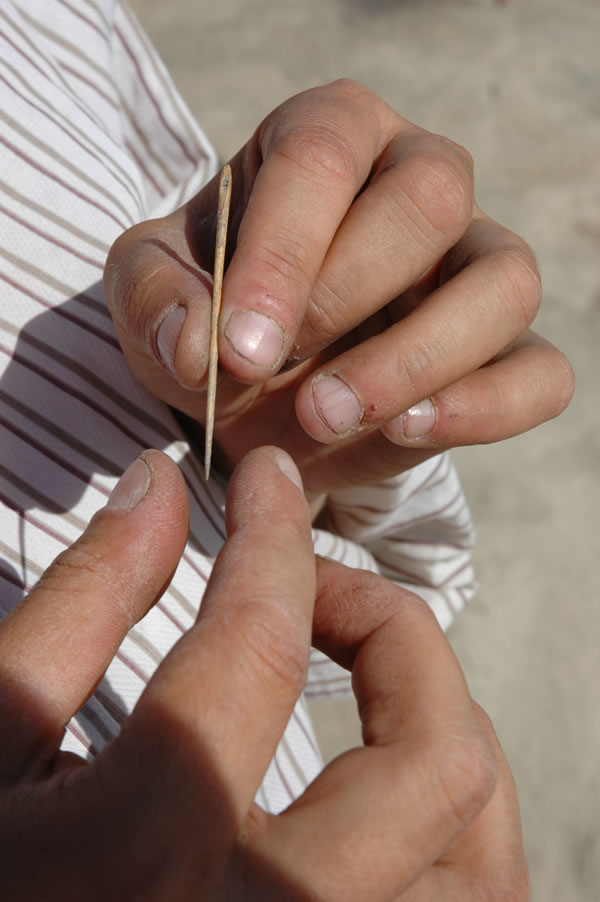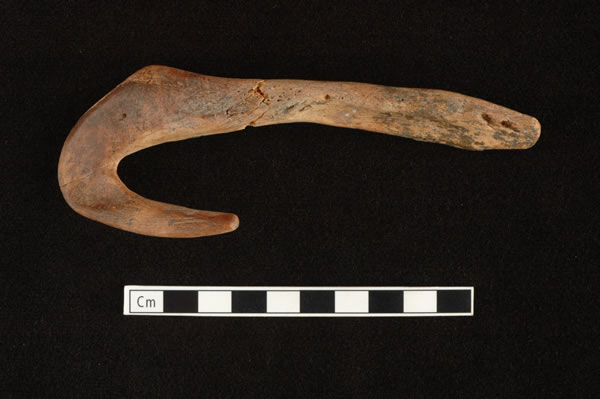FINDS - Worked Bone
199 worked bone items were recorded this season both from backlog and from current excavation. The worked bone items were mainly of types found in previous seasons, but some new types were found: a possible ‘flute' in a burial from Building 50 and a different type of needle, as well as a large premaxillary hook. Points continued to be the dominant type, accounting for 95 (or 48%) of the total worked bone items, followed in importance by beads at 21 (or 11%), and needles at 18 (or 9%).
Figure 33. This fine needle was found in midden deposits from Space 226. Similar in appearance to a modern type rather than the Çatal wide flat needles, it is not impossible that it is post-Neolithic in date, displaced by small animals.
Figure 34. The worked large bird ulna that was found on the chest of the skeleton in Building 50 (see Fig. 30) had both articular ends removed from the ulna and the remaining shaft was highly polished both along the length and on the new ends. These new ends were especially polished, but there was no sign of wear within the shaft, and the polish was clearly not the result of suspension. It is possible that the high polish on the ends and the slightly higher polish on the shaft where a hand might grasp it if holding it to the face indicate that it was used as some sort of musical instrument, a basic flute-type, but experimentation should be done to determine if noise can be produced in that way from a heron ulna. The item is currently classed as indeterminate, but hopefully can be assigned to its own. Although there are no perforations it may be possible to make sound by blowing across the top as has been found on similar items found elsewhere.
Figure 35. An unusual item that is being described as a belt hook although no eye was discovered was also found in a human burial context in Building 50. This was made by shaping and perforating (through bidirectional cutting and not drilling) the caudal end of an otherwise unmodified left aurochs premaxilla. It is strikingly similar to the item described by Mellaart (1962) as being “carved in the form of a stork's head” (plate VI).
Figure 36. Only one collar had been found by the new excavations until this year, when parts of five were discovered.. These were found in a human burial context from Building 50. These collars were made of boar's tusk which had been extensively shaped and polished before being perforated at both ends and decoratively incised on the front. The wear indicates that they could have been sewed onto clothing as well as /instead of suspended, but is not conclusive either way |



